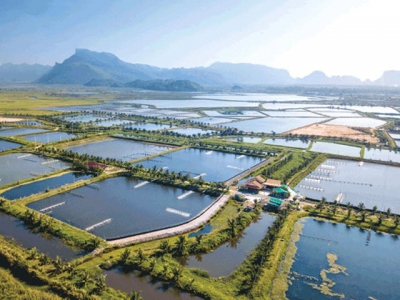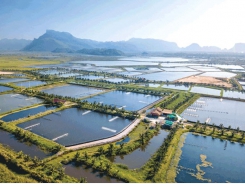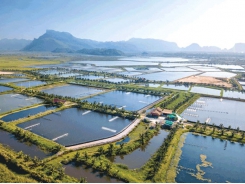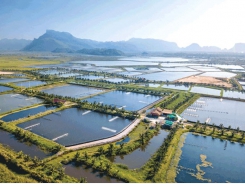Land Based Sustainable Aquaculture Strategy - Part 9

12/ Local climate and air quality
Key climate and air quality considerations include:
- Growing cycle – Water temperature significantly affects the metabolism and growth of aquatic animals. The longer the temperature is below the optimum range, the longer the growout cycle. It is therefore important to consider climate when evaluating a site. (See Water temperature);
- Design and construction issues – Climate and weather conditions should be considered when planning construction timetables, use of solar energy, positioning of ponds (water fetch, wave action, erosion), runoff, catchment and flood management facilities or flood control works;
- Effect on environmental performance–Noise and odour impacts are likely to be more of an issue in areas that experience local temperature inversions;
- Effect on irrigation water use–Temperature, humidity, rainfall, sunlight and wind patterns will affect plant growth and evapotranspiration levels. These factors will dictate the effectiveness of an irrigation area to utilise discharged water.
Ecological factors
The site should have:
- no impact on threatened species, populations or ecological communities or their habitats or critical habitat listed under the Threatened Species Conservation Act 1995 or the Fisheries Management Act 1994;
- no disturbance of native vegetation (including trees, shrubs, grasses, etc).
Key ecological considerations include:
- If terrestrial or aquatic threatened species, populations or ecological communities or their habitats occur on the site or in the area of impact, a test of significance (Section 5A of the Environmental Planning and Assessment Act 1979) must be undertaken (see Figure 6) and referred to the consent authority before a development application (DA) is lodged. The authority may determine that a Species Impact Statement is required under the Threatened Species Conservation Act 1995 and, in the case of any threatened aquatic species, under the Fisheries Management Act 1994. The Department of Environment, Climate Change and Water maintains a register of critical habitat.
- Areas of native vegetation and habitat should be retained wherever possibleto maintain or improve diodiversity values of a site. The site layout should be designed to minimise the destruction or disturbance of native terrestrial and aquatic vegetation;
The clearing of native trees, shrubs or grasses will usually require an approval under the Native Vegetation Act 2003. Native vegetation may be permitted to be cleared under routine agricultural management activities (RAMAs). If the vegetation is removed within 40 metres of the bank of a waterway or wetland, a controlled activity approval could also be required under the Water Management Act 2000. If mangroves, seagrass or foreshore vegetation is to be disturbed by the inlet and outlet pipes or drains, an approval may be required under the Fisheries Management Act 1994 (both Acts list threatened species, population and ecological communities and protected habitats) and Water Management Act 2000;
- Vegetation Management under the Native Vegetation Act 2003 is administered by DECCW and has developed a land management system which includes Property Vegetation Plans (PVPs). PVPs are developed in consultation with the Local Catchment Management Authorities (CMAs).
- If impacts on native vegetation can not be avoided or mitigated then offsets should be established.
- If abutting an estuarine area, consideration should be given to the likely risks to any nearby oyster aquaculture particularly Priority Oyster Aquaculture Areas or important fish nurseries or habitat;
Tip!
To determine the appropriate level of assessment for an aquaculture proposal, a test of significance and a project profile analysis can be referred to the consent authority for consideration.
Figure 6. The factors to consider in a test of significance.
The Environmental Planning and Assessment Act 1979 requires the following factors to be considered when assessing whether there is likely to be a significant effect on threatened species, populations or ecological communities, or their habitat:
(a) in the case of a threatened species, whether the action proposed is likely to have an adverse effect on the life cycle of the species such that a viable local population of the species is likely to be placed at risk of extinction,
(b) in the case of an endangered population, whether the action proposed is likely to have an adverse effect on the life cycle of the species that constitutes the endangered population such that a viable local population of the species is likely to be placed at risk of extinction,
(c) in the case of an endangered ecological community or critically endangered ecological community, whether the action proposed:
(i) is likely to have an adverse effect on the extent of the ecological community such that its local occurrence is likely to be placed at risk of extinction, or
(ii) is likely to substantially and adversely modify the composition of the ecological community such that its local occurrence is likely to be placed at risk of extinction,
(d) in relation to the habitat of a threatened species, population or ecological community:
(i) the extent to which habitat is likely to be removed or modified as a result of the action proposed, and
(ii) whether an area of habitat is likely to become fragmented or isolated from other areas of habitat as a result of the proposed action, and
(iii) the importance of the habitat to be removed, modified, fragmented or isolated to the long-term survival of the species, population or ecological community in the locality,
(e) whether the action proposed is likely to have an adverse effect on critical habitat (either directly or indirectly),
(f) whether the action proposed is consistent with the objectives or actions of a recovery plan or threat abatement plan.
(g) whether the action proposed constitutes or is part of a key threatening process or is likely to result in the operation of, or increase the impact of, a key threatening process.
Tip!
DECCW maintains a GIS database of information on the flora and fauna of NSW - Atlas Listing of Fauna and Flora Records in NSW (Contact: Data Licensing Officer (02) 9585 6684). This may provide an early warning of the occurrence of threatened wildlife species on or near the site. Councils may also have lists of species, populations and ecological communities in their areas and other useful data.
You should contact I&I NSW to see if any threatened species, populations or ecological communities have been recorded for a particular estuary or river.
Related news
Tools

Phối trộn thức ăn chăn nuôi

Pha dung dịch thủy canh

Định mức cho tôm ăn

Phối trộn phân bón NPK

Xác định tỷ lệ tôm sống

Chuyển đổi đơn vị phân bón

Xác định công suất sục khí

Chuyển đổi đơn vị tôm

Tính diện tích nhà kính

Tính thể tích ao




 Land Based Sustainable Aquaculture Strategy - Part 10
Land Based Sustainable Aquaculture Strategy - Part 10  Land Based Sustainable Aquaculture Strategy - Part 8
Land Based Sustainable Aquaculture Strategy - Part 8